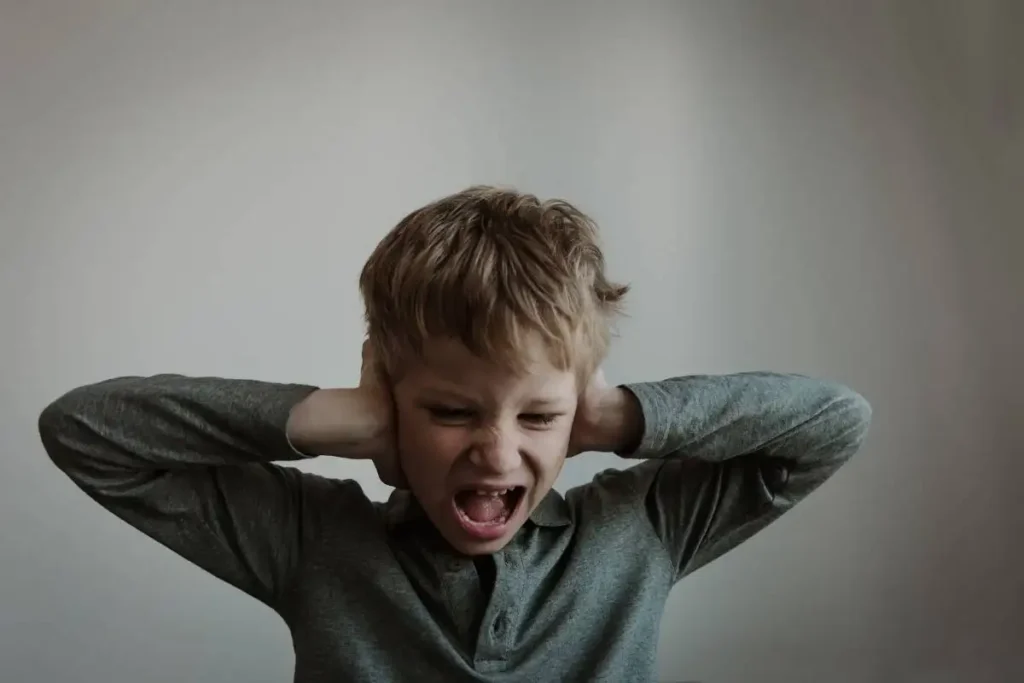As parents, we constantly observe and analyze our children’s behavior, looking for signs of their overall well-being. One area that requires attention is sensory seeking behaviors, which can affect a child’s daily life and interactions.
Sensory-seeking behaviors involve an increased need for sensory input and stimulation. In this article, we will discuss how to identify and address sensory seeking behaviors in your child, providing you with valuable insights and strategies to support their development.
What are Sensory Seeking Behaviors?

Common Signs of Sensory Seeking Behaviors
Identifying sensory seeking behaviors in your child can be challenging, as they can present differently in each individual. However, here are some common signs to look out for:
- Intense physical activity: Children may engage in excessive running, jumping, or climbing, seeking the sensation of movement.
- Constant touching: Your child might touch objects, people, or surfaces more frequently than others, seeking tactile input.
- Craving specific textures or tastes: They may strongly prefer certain textures in clothing or seek out intense flavors in food.
- High sensitivity to sounds: Sensory seekers may enjoy loud music or produce repetitive noises to fulfill their auditory needs.
- Overwhelm in visually stimulating environments: Bright lights, colorful patterns, or busy visuals may attract sensory seekers.
- Constant fidgeting: Difficulty sitting still or remaining focused on a task for an extended period could be an indication of sensory seeking.
Read also: Strategies for Helping Children with Communication Difficulties
Identifying Sensory Seeking Behaviors
Understanding your child’s sensory seeking behaviors is crucial to provide them with appropriate support. Here are some strategies to help you identify these behaviors:
1. Observe and Document
Carefully observe your child’s behavior in various environments and situations. Keep a journal or use a mobile app to record their actions and reactions. Note down any patterns or triggers that may indicate sensory seeking behaviors.
2. Consult with Professionals
If you suspect your child has sensory seeking behaviors, seek guidance from professionals such as pediatricians, occupational therapists, or child psychologists. They can conduct assessments and provide valuable insights into your child’s sensory needs.
3. Engage in Play and Activities
Participate in sensory-rich activities with your child, such as playing with textured toys, engaging in physical activities, or creating sensory bins with different materials. These activities can help you observe their responses and identify their preferences.
4. Talk to Teachers and Caregivers
Collaborate with your child’s teachers and caregivers to gain a comprehensive understanding of their behaviors. They may have insights from their observations in different settings, such as school or daycare.
Addressing Sensory Seeking Behaviors
Once you have identified sensory seeking behaviors in your child, it’s essential to address them appropriately. Here are effective strategies to support your child’s sensory needs:
1. Create a Sensory-Friendly Environment
Designate specific areas in your home where your child can engage in sensory activities. Provide a variety of sensory materials and tools, such as fidget toys, weighted blankets, or noise-canceling headphones. This allows your child to explore their sensory preferences in a safe and controlled manner.
2. Incorporate Sensory Breaks
Introduce sensory breaks throughout your child’s day. These breaks can involve activities that help regulate their sensory system, such as deep pressure activities, swinging, or jumping on a trampoline. Sensory breaks provide an outlet for their sensory seeking behaviors and promote self-regulation.
3. Offer Alternative Sensory Experiences
Provide a range of sensory experiences to fulfill your child’s sensory needs. Offer various textures, tastes, sounds, and visuals through activities like art projects, cooking, listening to music, or exploring nature. By diversifying their sensory input, you can help satisfy their seeking behaviors in a controlled manner.
4. Seek Professional Guidance
Consult with professionals experienced in sensory integration, such as occupational therapists or behavioral therapists. They can develop individualized plans to address your child’s specific sensory seeking behaviors and provide strategies for home and school environments.
Read also: How Does Autism Affect a Child Intellectual Development
(Frequently Asked Questions)
Can sensory seeking behaviors be mistaken for other conditions?
Sensory seeking behaviors can sometimes be mistaken for other conditions such as ADHD or autism spectrum disorders. Consulting with professionals can help in accurately identifying and differentiating these behaviors.
At what age do sensory seeking behaviors typically emerge?
Sensory seeking behaviors can emerge at various ages, with some children displaying signs as early as infancy. However, they are more commonly observed during early childhood.
How can I determine if my child’s sensory seeking behaviors are problematic?
If your child’s sensory seeking behaviors significantly interfere with their daily activities, social interactions, or cause distress, it is advisable to consult with professionals who specialize in sensory integration.
Are sensory seeking behaviors always a cause for concern?
Not necessarily. Sensory seeking behaviors are a normal part of sensory development in many children. However, if they persist and significantly impact your child’s functioning, seeking professional guidance can be beneficial.
Can sensory seeking behaviors change over time?
Yes, sensory seeking behaviors can change as children grow and develop. Some behaviors may naturally diminish or shift, while others may persist or require ongoing support.
Conclusion
Identifying and addressing sensory seeking behaviors in your child is crucial for their overall development and well-being. By understanding the signs and employing effective strategies, you can create an environment that supports their sensory needs. Remember, each child is unique, and what works for one may not work for another. Stay observant, seek professional guidance, and provide your child with the necessary tools and experiences to thrive.







